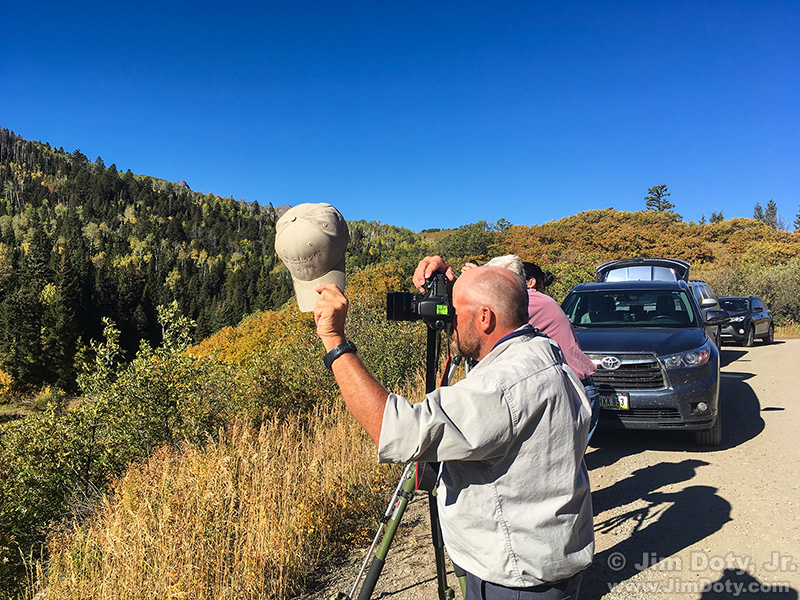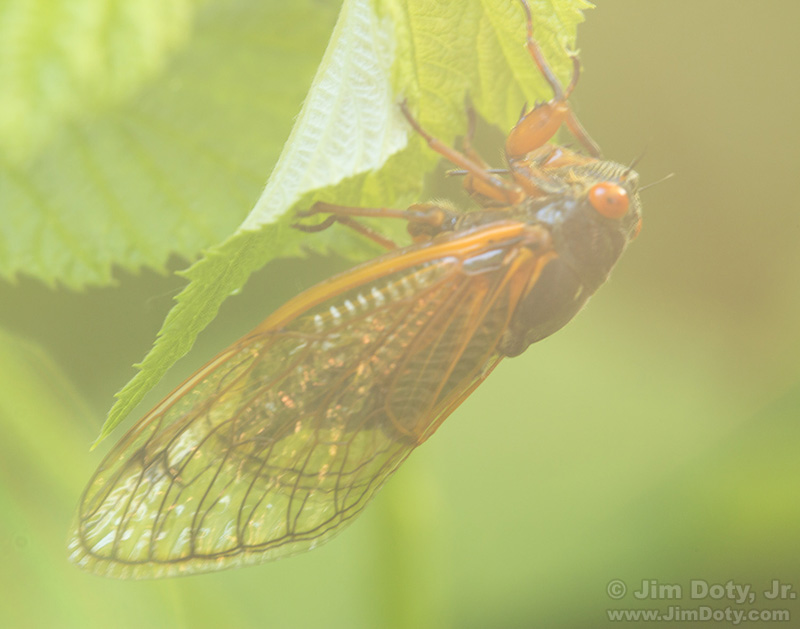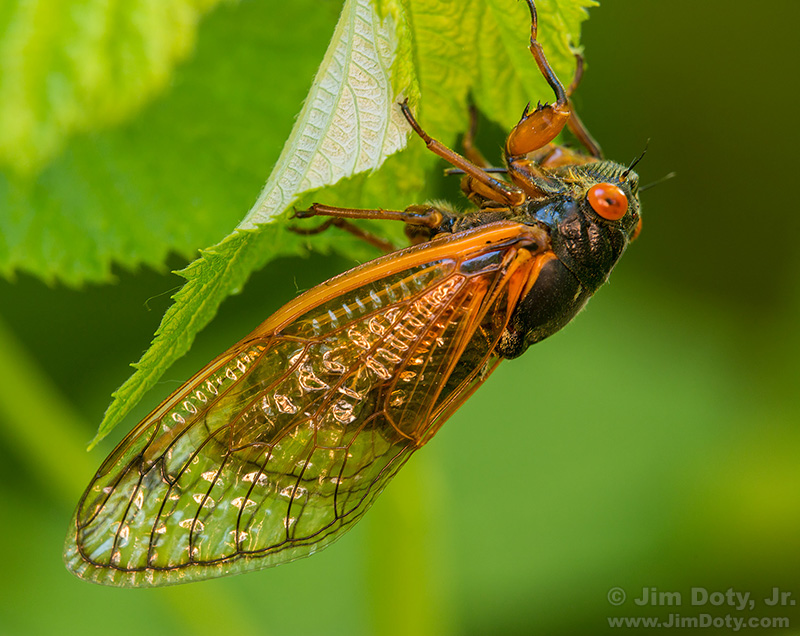This happy group of photographers is on a multi-day photo safari in western Colorado. The photographer in the foreground is using his hat to cast a shadow on the front of his lens. Why is he doing that?
When the sun is in front of you, but not in the frame, sunlight enters your lens at an oblique angle and bounces around between the lens elements, robbing your picture of color, contrast, sharpness, and saturation. So it is important to block the sunlight from hitting the front of your lens. The front of this photographer’s lens is in the shadow cast by his hat. The other photographers on the safari are also blocking the sunlight from hitting their lenses. Some of them are using their hands to block the sunlight. Do this and you will get richer, crisper, more colorful pictures. Just be careful not to get your hat or hand in the photograph. This technique works best if you are using a tripod.
The sun is not in the frame of this cicada photo, but sunlight is hitting the front of my lens at an oblique angle. The loss of quality is obvious. So I took off my hat and held it where it blocked the sunlight from hitting the front of my lens.
This is the result. The difference is dramatic.
In some situations the loss of color and contrast won’t always be so obvious as in this pair of cicada images. If a landscape through your camera’s viewfinder doesn’t look quite as dramatic as what your eyes are seeing, block the sunlight from hitting your lens to see if it makes a difference. It might mean the difference between a good image and a great image. Use a hat or your hand or your gray card or whatever you have handy.
Any time the sun is in front of you but not in the frame, block the sunlight to see if the quality of the image improves. If you aren’t sure, take a before and after image just to be sure. You may not see the difference on the back of your camera or through the viewfinder, but it will show up when you download your photos.



